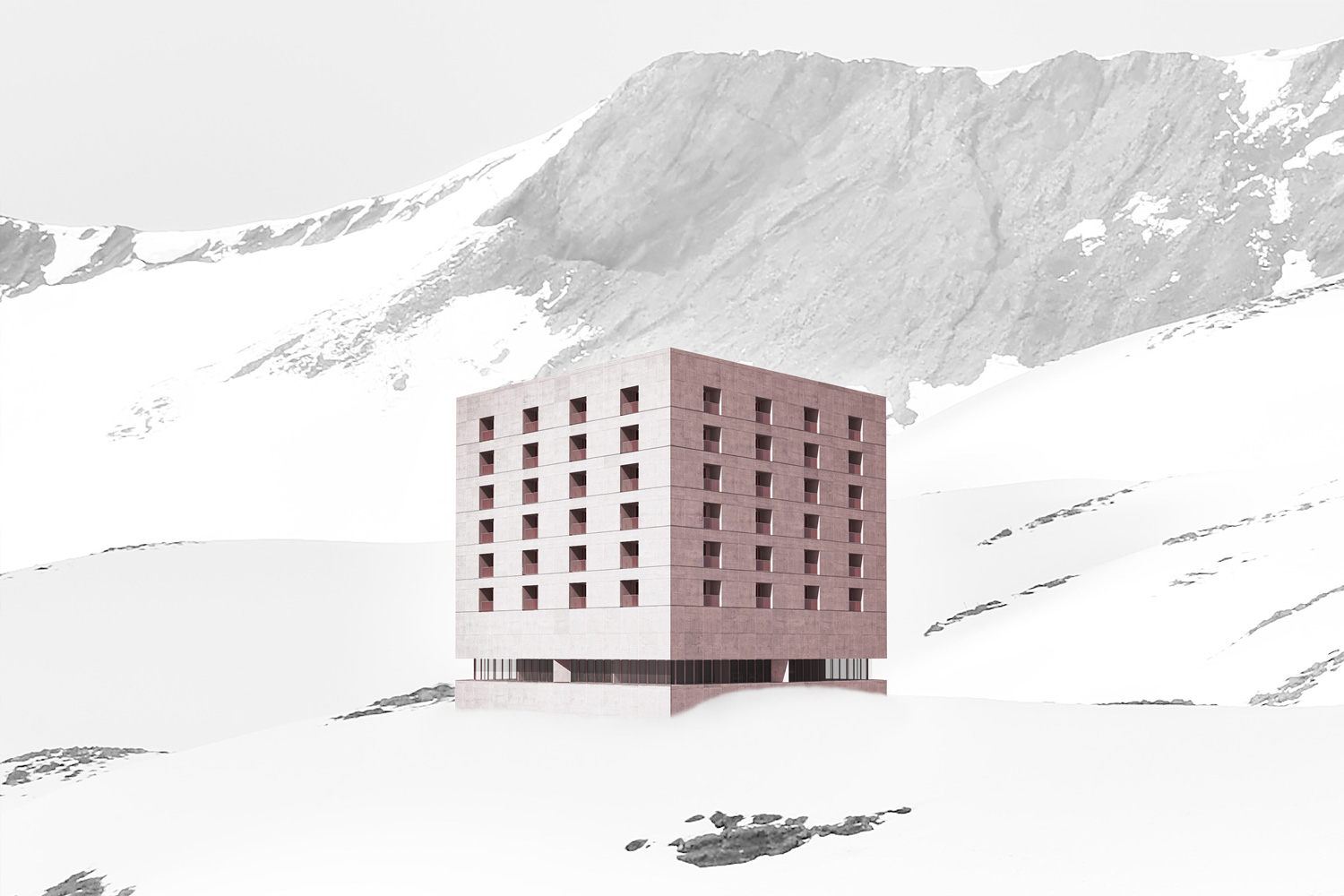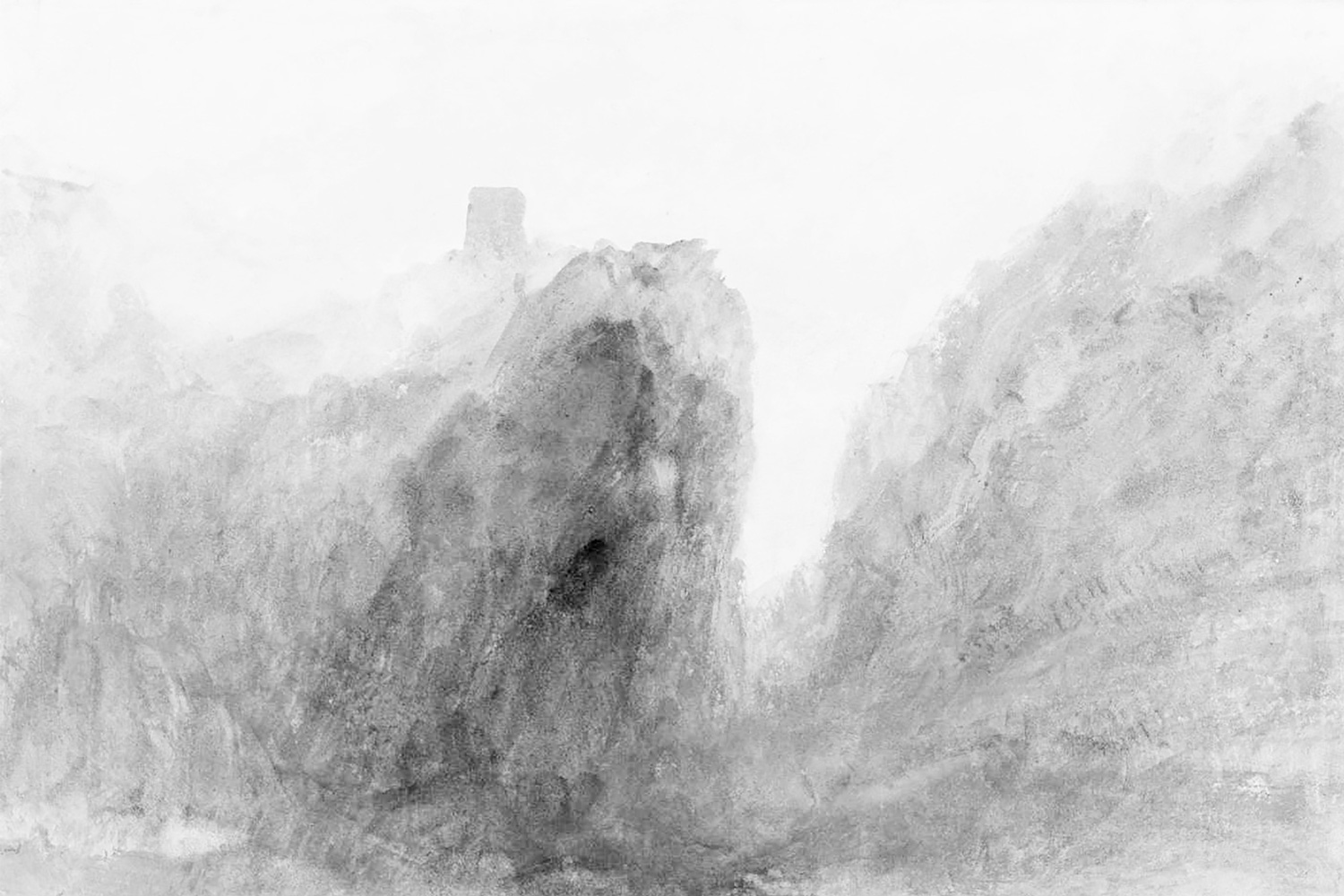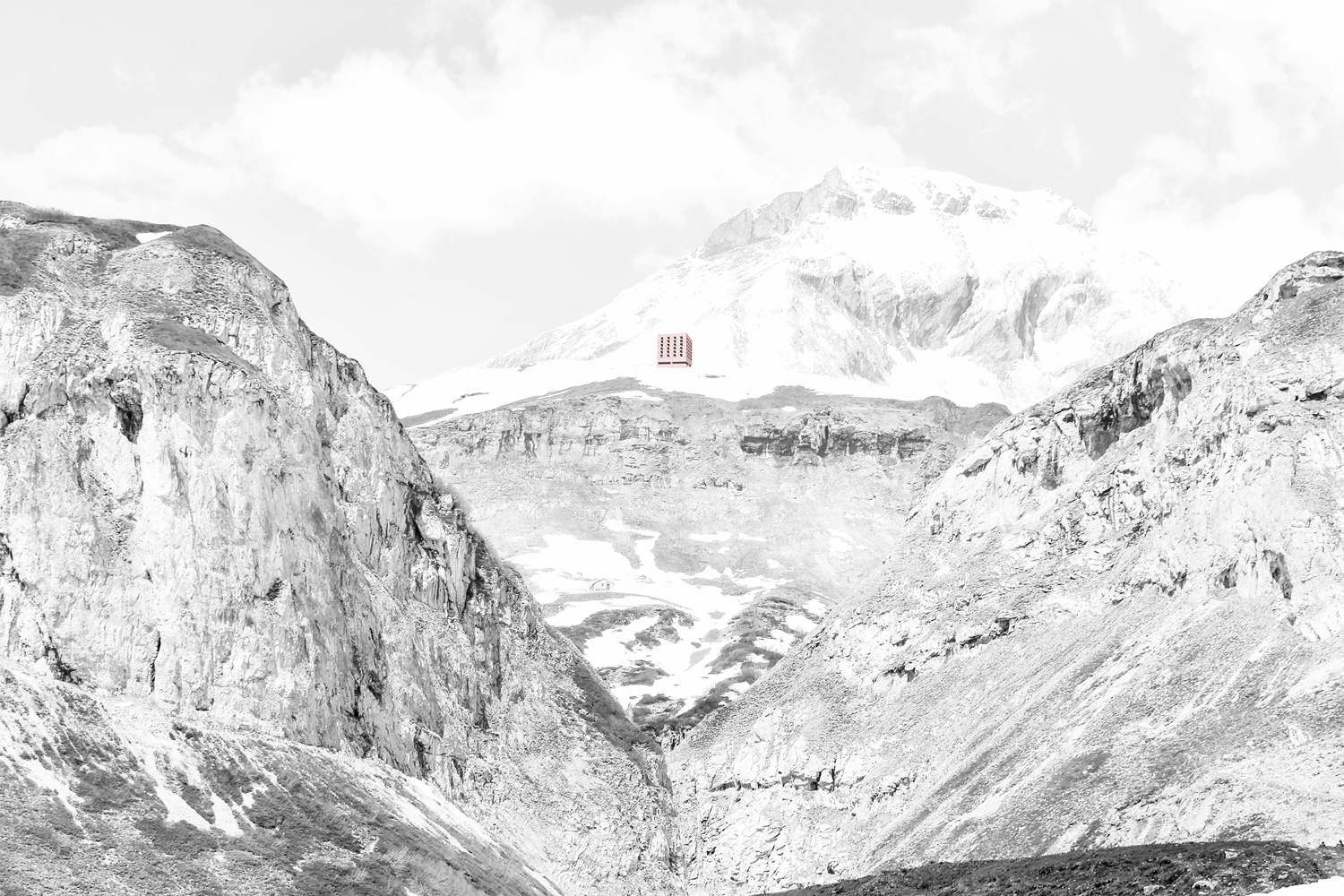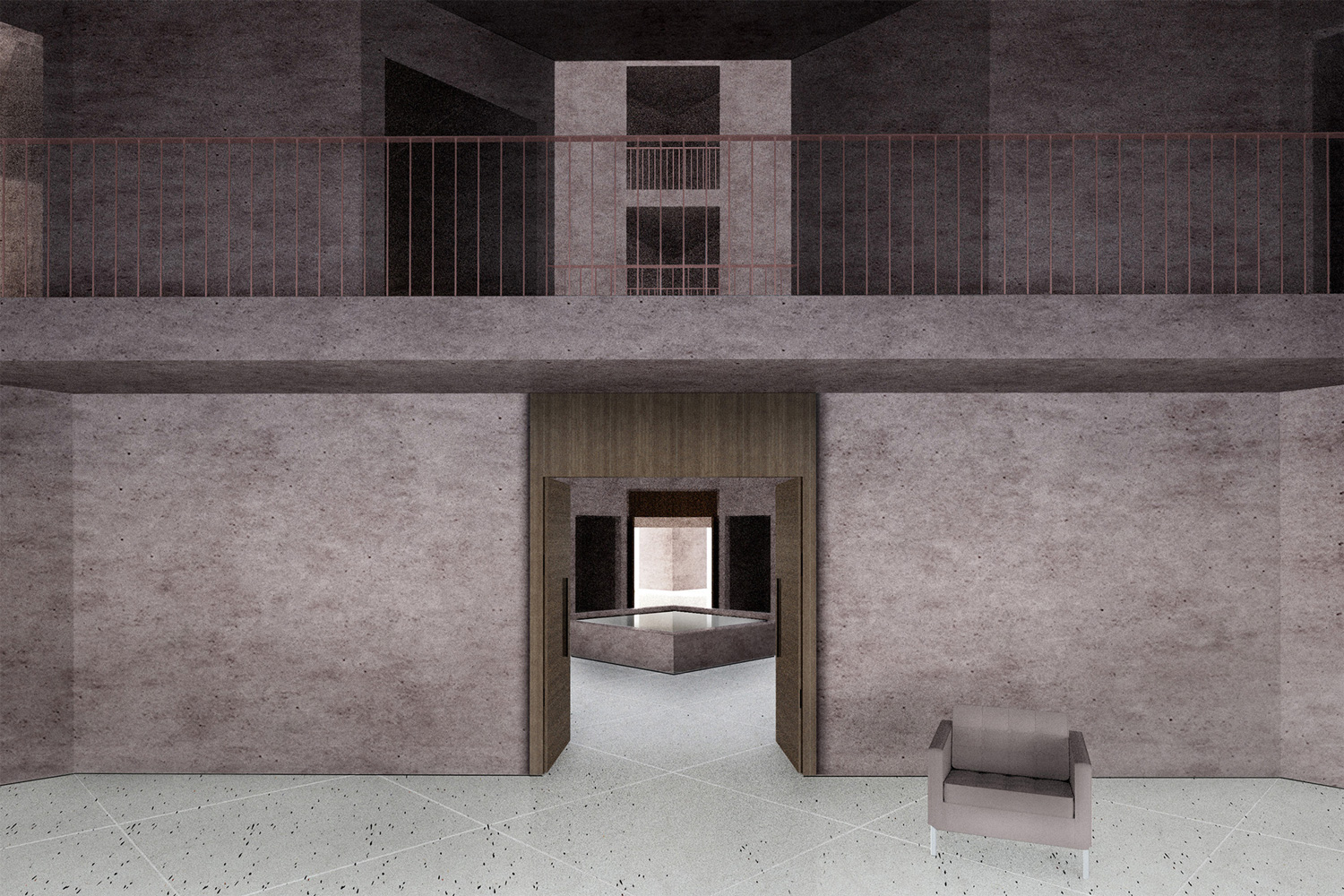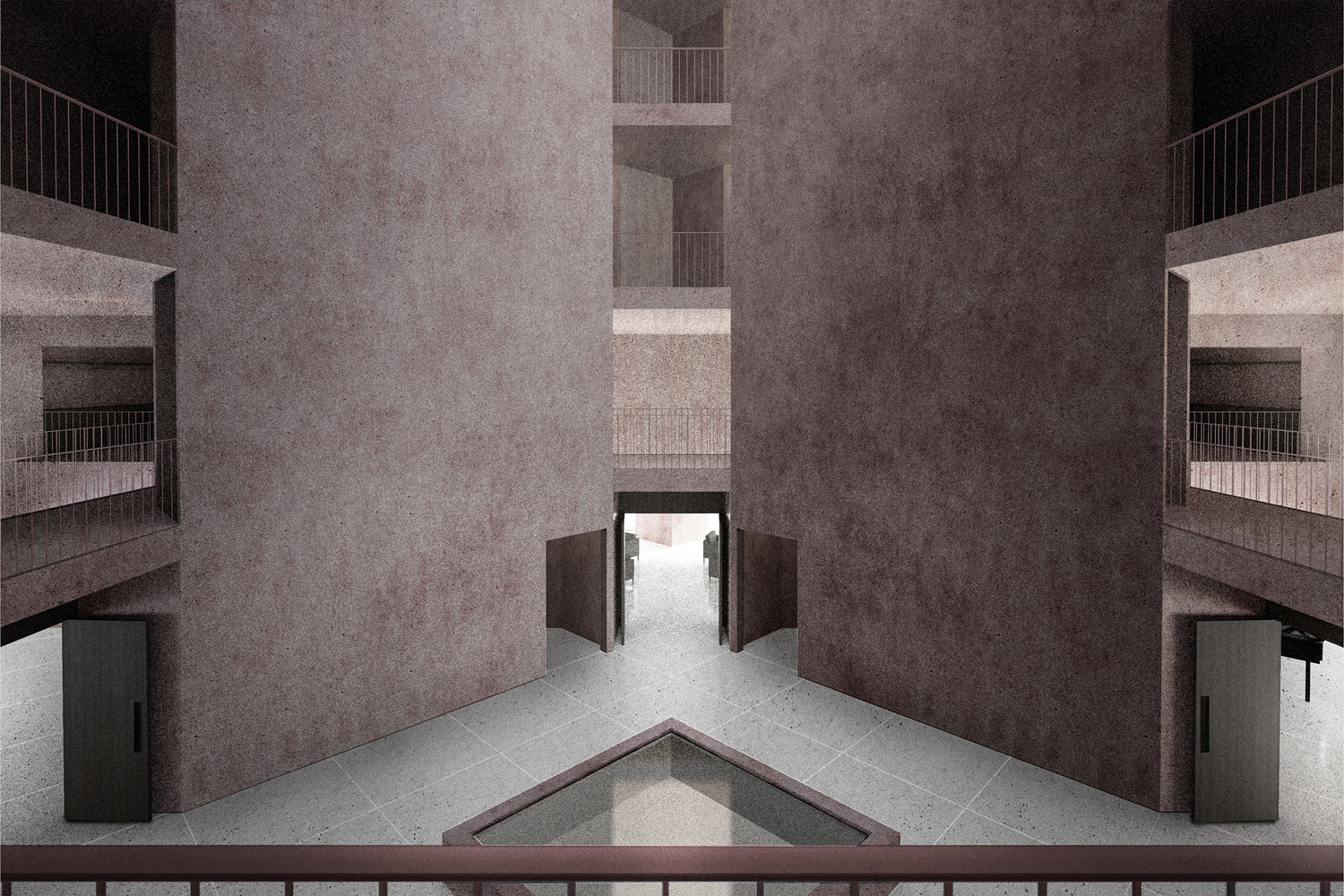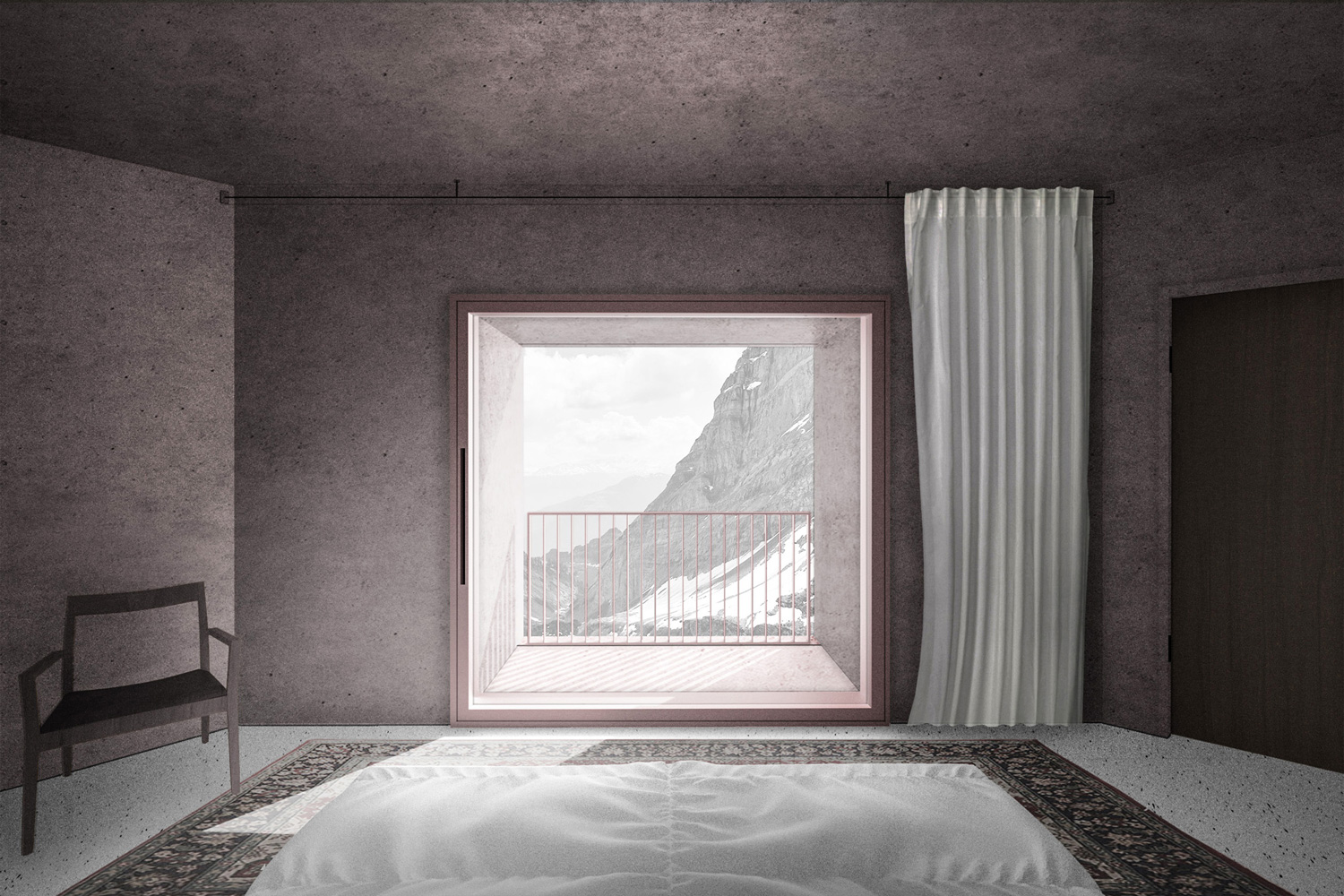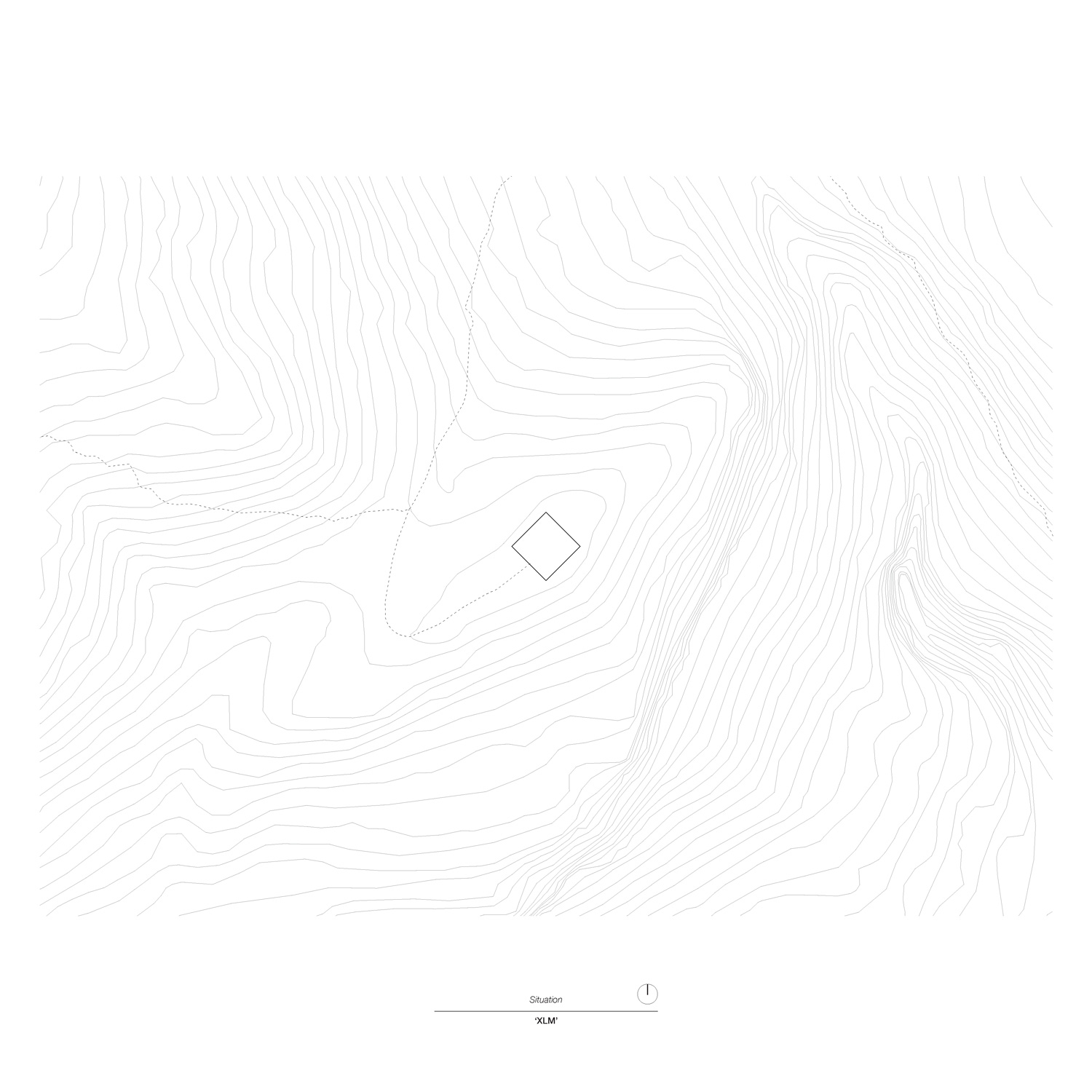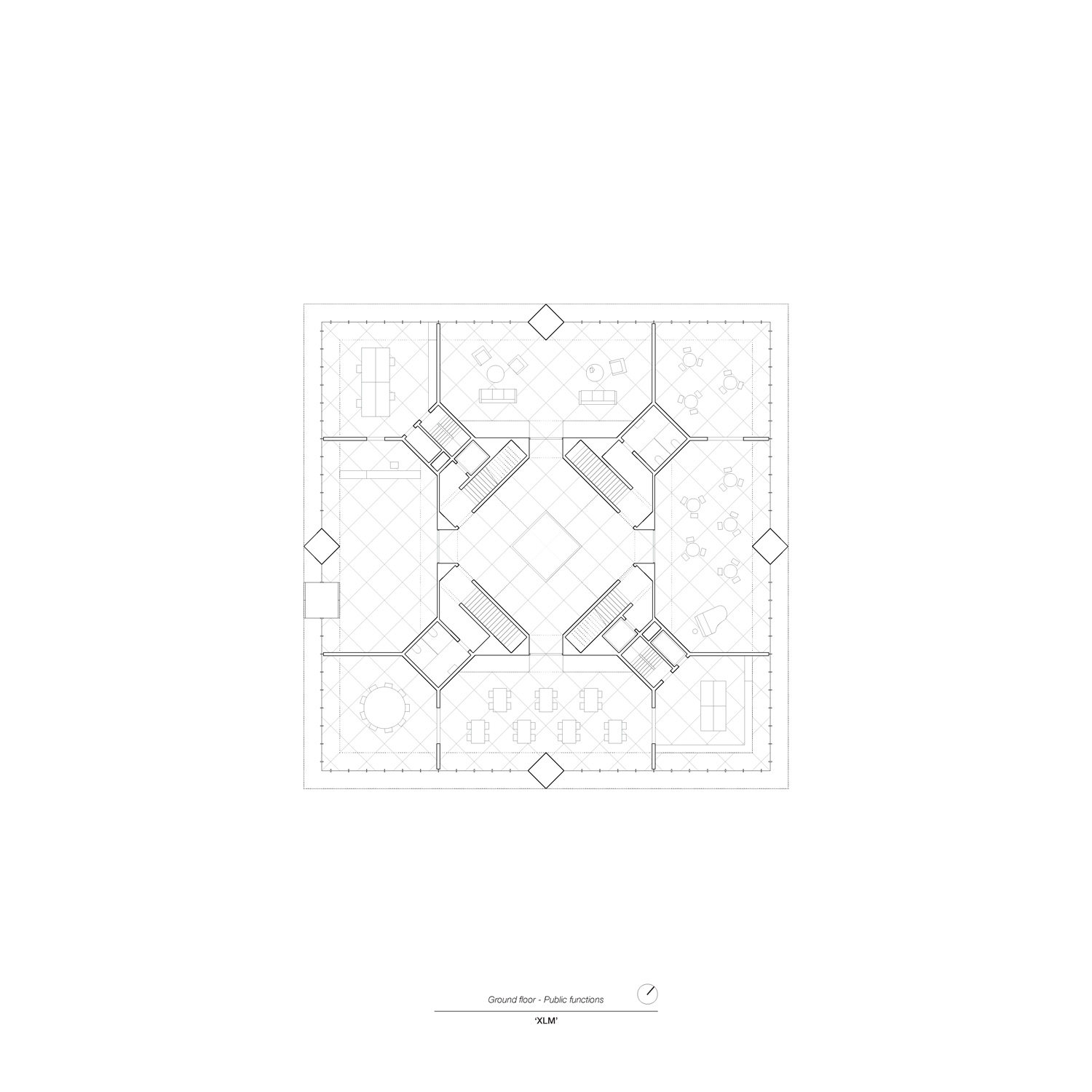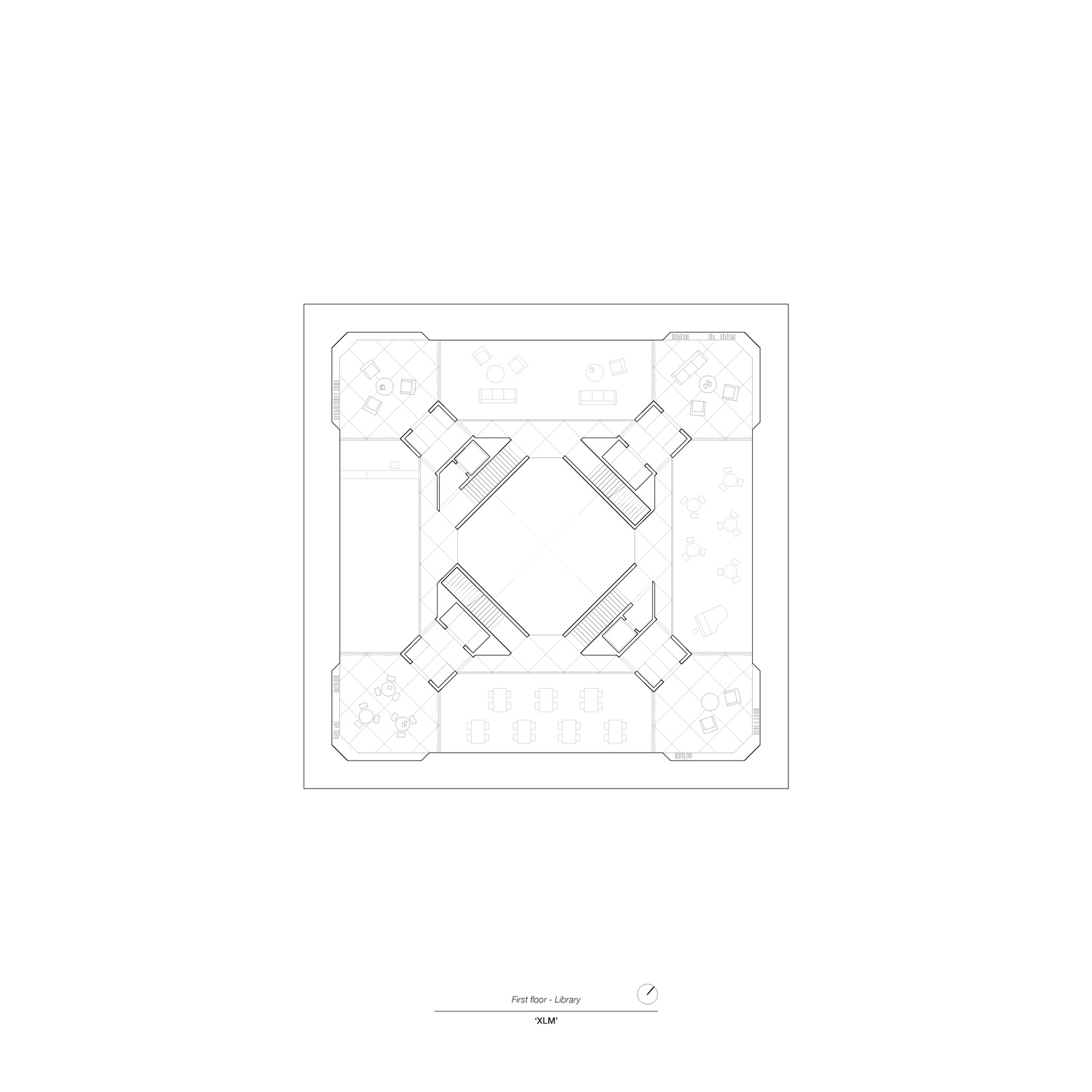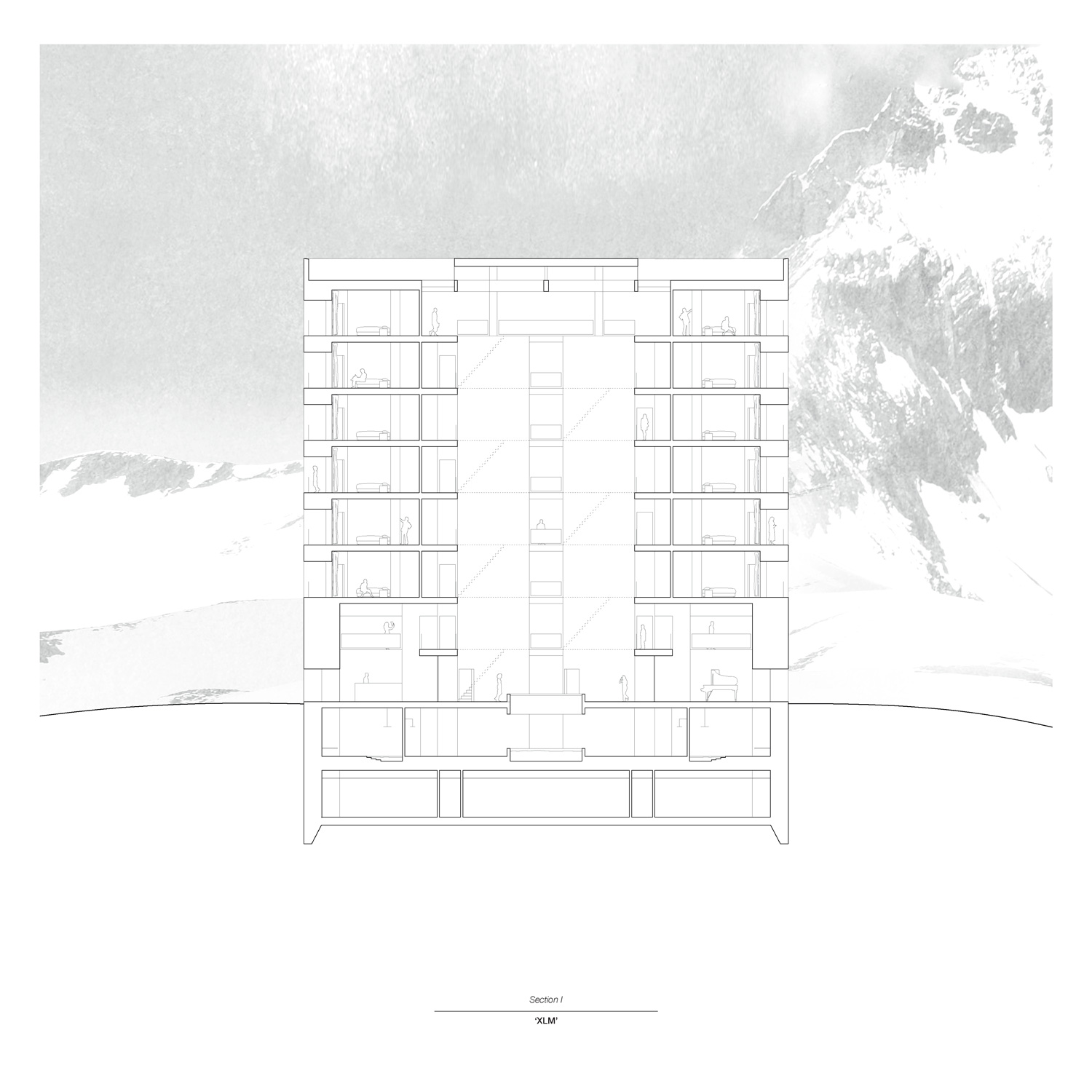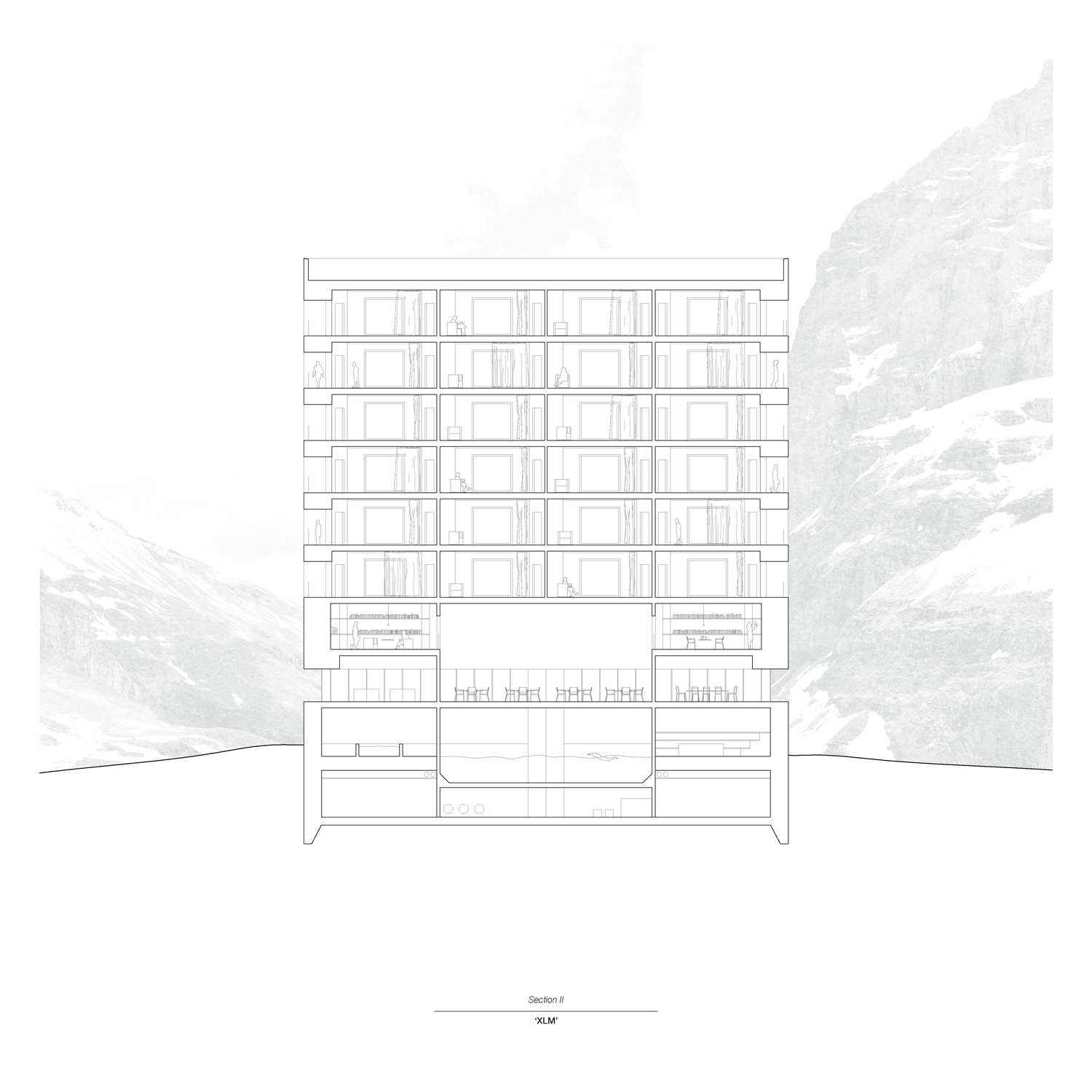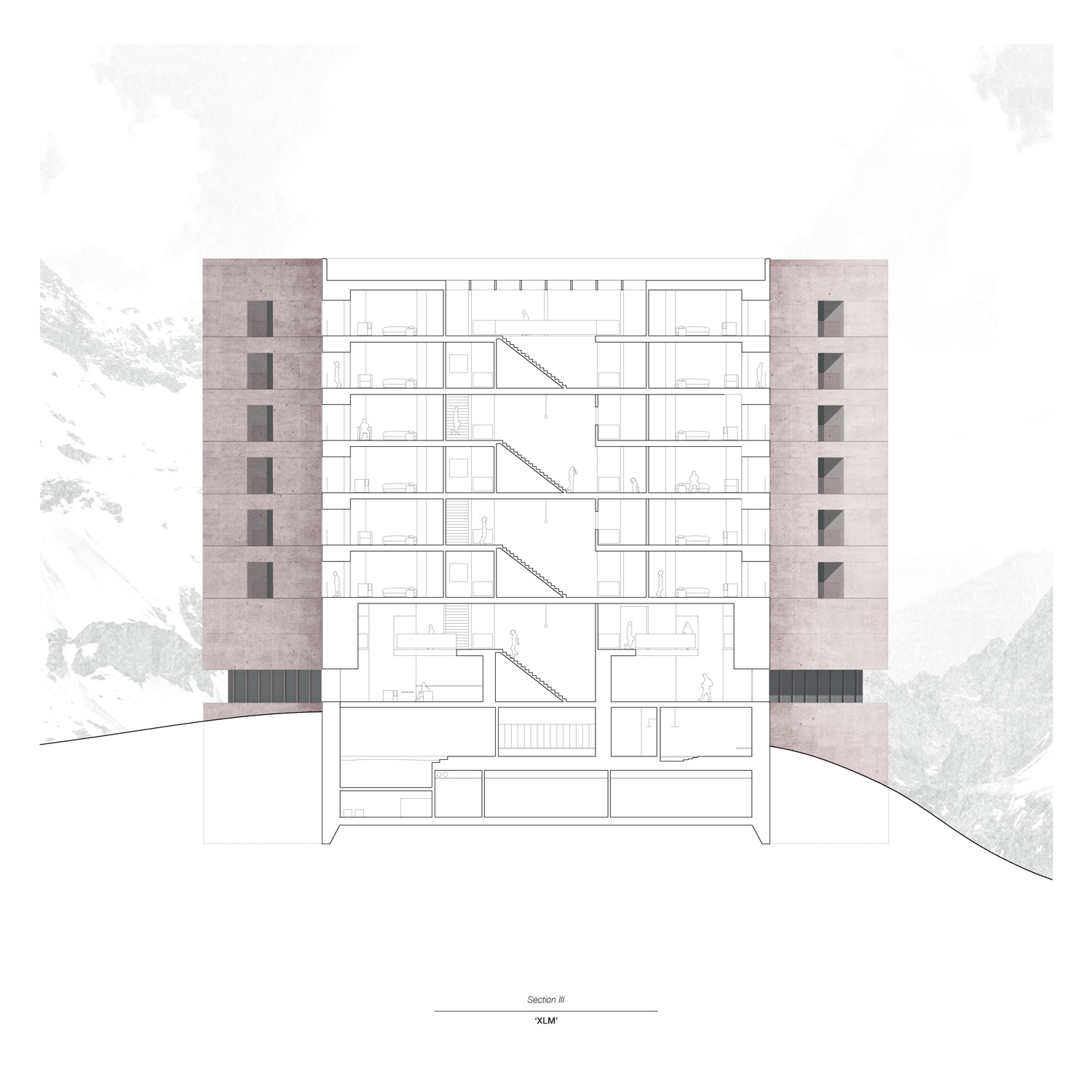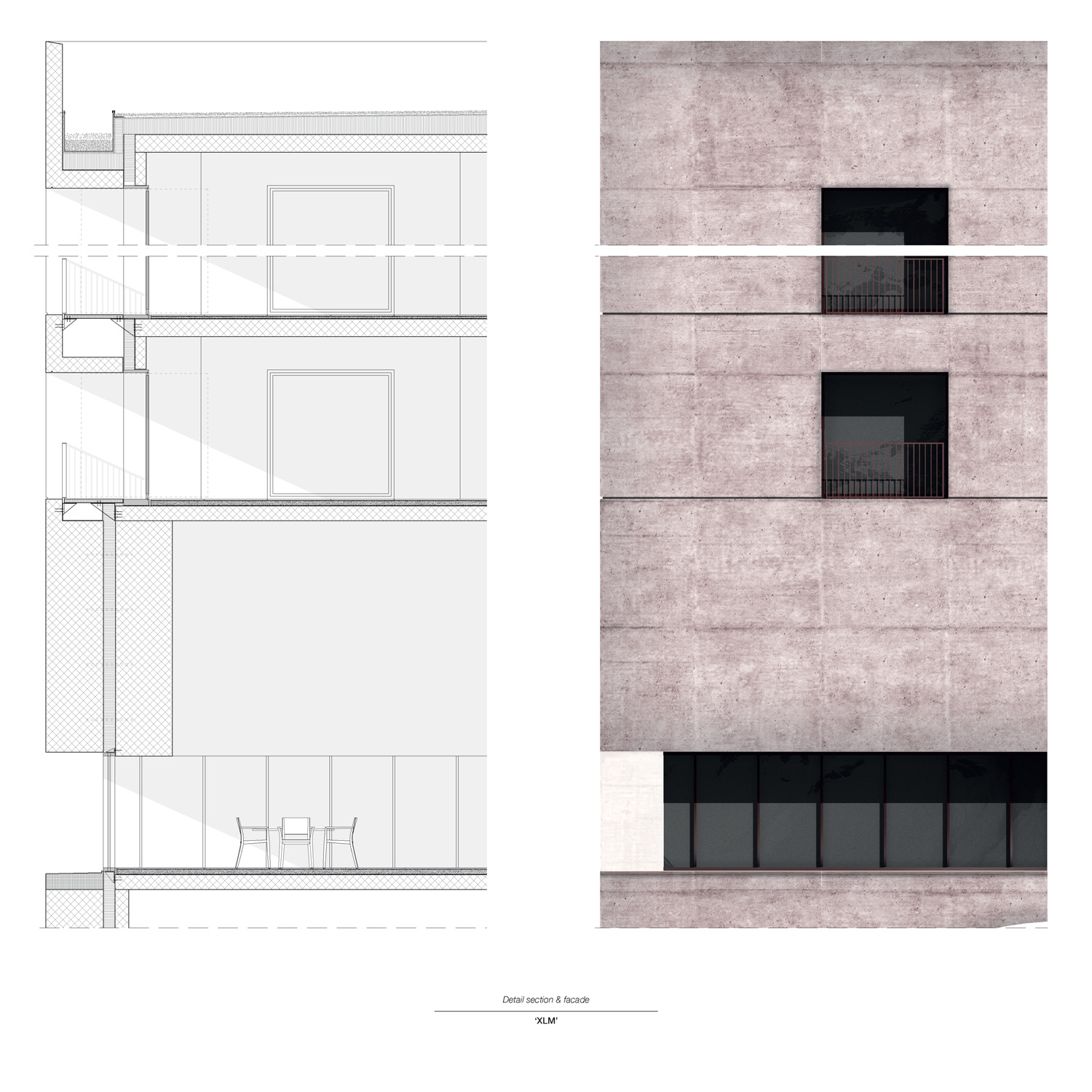☉ XLM, A Hotel in the Swiss Alps is an academic project by Axel Burkhard for Bauhaus Universität Weimar in 2018. It is located in Graubünden Switzerland in a mountain setting. Its scale is medium with a surface of 5.700 sqm. Key material is concrete.
How should one imagine architecture in the absence of built context, in a landscape formed by mountain ridges. An immaculate rocky condition presents a utopian environment, on which the architect must adopt a clear position. This task, which includes the integration of a 2500 meters high hotel complex, presents itself, on the plateau of «Raschaglius», close to Flims, in the canton of «Graubünden» in Switzerland.
Conceptual strategy, the «Utopia»
The ideals of the«Utopia» become the generating force for the project, which finds its architectural translation through an expression of geometrical radicalism pushed to its extreme, playing with pure forms, symmetry, rotation. Thus, the architecture integrates itself to the nature of its context through its opposition to it. Voluntarily austere, the brutalist character of the building amplifies the authentic beauty of its environment, as if to maintain a clear distinction between natural and artificial, as two extremes that meet and coexist in a strange harmony.
Architectural translation, extreme geometry
Guided by this clear position, the project «XLM» manifests itself as a pure form, a cube, placed in a commanding position on the highest point of the site. It embodies the spirit of the landmarks of the landscape visible from the valley, its castles and towers, as expressed by a painting from J.M.W. Turner – «Entrance to the Via Mala». The entire building is rotated 45 ° to the north, which means that the top of the square as seen in plan is oriented exactly to the south, as if to support this harmonic dissonance between nature and architecture. This precise rotation supports the artificial nature of the object and is reflected in the spatial conception of its architecture. Thus, the relationship to light and views vary distinctively between the four facades, sometimes looking out against the rock and sometimes against the horizon, allowing the building to further capitalise on the existing qualities of the site.
Drawings & Organisation, symmetry, 45° rotation and pure forms
The organisation of the plans stems from the conceptual intentions mentioned above. The «regulator pattern» is identified through the use of symmetry, the square, as well as the rotation of 45 °, enriching the spatial qualities. All the spaces are integrated in the same raster, supporting both the plasticity and rationality of the work. The center of the spatial organisation is defined by a square atrium rotated 45 ° extending across the entire height of the building.
In the individual floors, spaces are repeated and radiate out onto the four faces of the cube, it is thus only the nature which invites itself as the variable parameter, deciding the atmosphere of each space, and thereby maintaining its predominant role. The major public functions are integrated within the ground floor of the building, distributed across four identical double height spaces. These spaces are characterised by four square columns, which support the facades and reflect the essence of the architectural concept. They are the only outside clue to the use of the 45° rotation as organisation basis for the plans.
The ascension in the higher levels is enabled via two alternating stairway, which play with the orientation of the visitors, who only regains consciousness of their exact position upon reaching their room. This coupling of surprise with the beauty of nature, is particularly profound in such an ostensibly clear and geometric project. The architecture plays on the dichotomy of «visible / invisible», the spaces are sometimes introverted, sometimes extroverted. The voids connect these spaces, offering crossing and connecting perspectives. The human dimension is given to the building through its views, its sounds and its spaces, which constantly meet one another, breathing life into the project. The «inhabitant» becomes the «link» between nature and artefact.
All spaces are characterised geometrically through the presence of one or more walls rotated at 45 °, thus unifying the architecture in terms of complexity and plasticity. The depth of the openings as well as the use of the red concrete in the facade support the artificial, sculptural and utopian aspects of the architecture, while at the same time reinforcing the landmark character.
Conclusion, an architectural statement
Knowingly unrealistic from a feasibility point of view, «XLM» attempts to question the complex relationship between architecture and nature, the quest to integrate within a place deprived of any human intervention.The project stems from the reading of the landscape and embodies the desire to exalt nature, integrating tension into calm, generating an overview of the relationship between the harsh accuracy of the artificial and the mystic ambiguity of the natural.
